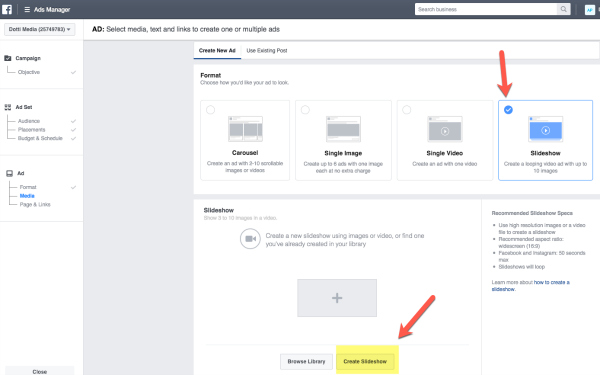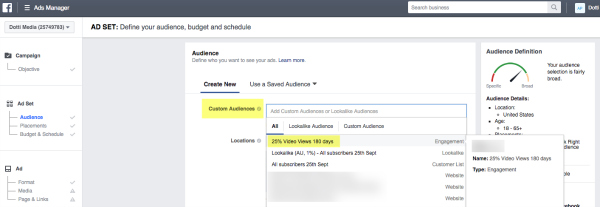ProBlogger: Don’t Kill Your SEO Chances Before Your Blog Has Even Begun | |
| Don’t Kill Your SEO Chances Before Your Blog Has Even Begun Posted: 01 Nov 2016 06:00 AM PDT This is a guest contribution from Matt Clough. There's nothing like the rush of a new idea forming in your mind, the adrenalin that comes from suddenly have a clear focus and direction. This is as true with blogging as it is anything else. If you've got an exciting new blogging project, it's very tempting to get the not particularly exciting stuff – hosting, blog platform selection – over and done with as quickly as possible in order to move on to truly bringing your idea to life. But wait! As hard as it can be to put the brakes on an idea and take a slightly more measured approach, it is absolutely critical to do so if you want your new idea to survive the initial burning passion phase. By not looking to the future and failing to plan for the route your new website may take, you can seriously impede its ability to thrive – particularly in terms of SEO. SEO – short term actions for long term goalsIt's a tried and tested truism that to be truly successful when it comes to attracting organic traffic from search engines like Google, you have to be willing to stick at it. Some people see results in weeks; many have to wait several months to really begin to see any significant traction. However it's a common mistake to assume that because SEO is a long-term traffic strategy, the actions you take to get the ball rolling can be spread out over a long period of time, too. In fact, some websites can be left rueing decisions taken in their first days and weeks of existence years later when their SEO potential is restricted. So what are some of the key choices that are imperative to get right if your blog is to become an organic traffic success story? HostingHosting is important from both a site speed and a reliability point of view. Whilst it can be tempting to find the cheapest hosting solution, paying a little more can lead to a site with much faster server response speeds that can relied upon to keep running consistently. Site speed is an important piece of the on-site optimisation puzzle if you're to encourage Google to reward your site with strong rankings, and no amount of tweaking aspects of your site can ultimately overcome a slow server. Site reliability and SEO have an obvious connection. If your site struggles to deliver on what it promises visitors from search engines, they'll inevitably return to their search, informing the engine at the same time that they've bounced back. Search engine crawlers will also take a dim view if they repeatedly find they can't access a page. Domain URLChoosing a URL is one of the more fun set-up tasks, but it also has a significant impact on your SEO. The main part of your URL should follow your branding, rather than chasing rankings with an exact match domain. Domains centered around your target keywords have had a decreasing effectiveness within Google's algorithm for some time, meaning they're no longer the potent SEO tactic they once were. Additionally, going after one specific niche or keyword can act as a limitation when you want to expand your blog's horizons in the future. The TLD (top level domain) part of your blog's URL – where you decide if you want a .com website or a variation such as .net – is also important. If you're blogging from somewhere with a country-specific TLD, such as the United Kingdom, you should think long and hard about your audience. If your content will only ever be relevant to that country, consider using the country TLD for added trust from users. If, however, you think your blog will be applicable to readers the world-over, don't commit to just one country's code, which makes it much harder to make an impact upon foreign rankings. CMSUnless this is your first time at ProBlogger, the chances are you will have read the comprehensive guide on how to start a blog. Here the importance of selecting a blogging platform that suits your needs is stressed, and the guide will serve as a fantastic resource to help you make the right choice. Your CMS, or content management system, is essentially the engine that powers your blog. Not only is it where you create your posts and pages, it's also what allows you to connect with new plug ins and add functionality to your website. Of the hundreds of options out there, WordPress is by far the most popular choice for blogs. The key thing for preserving your SEO potential when choosing a CMS is to leave your options open for the future. If there's a possibility of branching out into selling products from your blog, for example, choosing an out-of-the-box option that offers no eCommerce support will have serious ramifications. Most CMS nowadays offer a strong degree of SEO-friendliness, but where problems arise is when a site has to change their CMS in order to continue to grow. Replatforming a site is a project brimming with pitfalls and can be a major undertaking for someone without development and SEO experience. PermalinksOf the four areas we've covered so far, permalinks tend to be the easiest to change (if you're using a CMS such as WordPress), however that's not to say that they don't still pose plenty of future headaches if you don't set them up in an optimal fashion. Google likes permalink to follow a consistent and easy-to-understand pattern. If faced with two identical pages, one of which has the URL www.example.com/example-product-name and the other which uses www.example.com/1223334444, the search engine will have an easy decision to make. As Richard Richsh talks about here, there are a dazzling array of different permalink structures you can use. While there are some golden rules to follow to make your links SEO-friendly, there are plenty of options to decide which structure fits your site best. As with picking your CMS, the key thing from an SEO perspective is to choose an optimised taxonomy for your URLs that doesn't restrict your options in future. For example, if you plan on introducing keyword-optimised landing pages in the future, then it's best to avoid using very short URLs on early blog posts – you may need these for later. Changing a permalink structure, like your CMS, isn't impossible. However, it can throw up a lot of problems, and it's always a nerve-wracking moment when you press the button to change the URLs for all your ranking pages! Keyword targetsWhile it can seem a bit early to think about keyword targets when, in all likelihood, you're not sure exactly what direction you'll end up taking your blog in, conducting some research here can be invaluable. Even if only implemented upon your homepage, getting into the habit of identifying keywords that you want to target is never a bad idea. The keywords utilised on your homepage also play a role in helping search engine crawlers to understand the main theme of your blog. If, for example, you ran a makeup review blog but didn't mention keywords such as "makeup review" on the homepage, then search engines would potentially have a tough time deciphering whether your aim was to review and inform audiences or if you were selling or promoting the products you were covering. Post structureSimilarly to permalinks, post structure isn't something that you're tied to forever once you've chosen it. That said, it can be a huge pain to go back through hundreds of old posts and laboriously change them, one by one, to a new style. Generally speaking, it's great to keep all your posts consistent from a structural point of view. It helps readers move from post to post with greater ease, makes your older posts look less dated and gives your blog an overall more professional feel. If that's not enough to convince you, it also has an SEO benefit. Structuring your posts with the correct headings will make them much easier to understand for Google and other search engines. Perhaps the most common error on post structure is multiple uses of the H1 tag, called 'Heading 1' in WordPress. Ideally, you only want one H1 tag per page. Many blog themes will automatically turn your post title into an H1, meaning you shouldn't use the main heading option anywhere in the body of the post. There are no limits on how many H2 tags, H3 tags or any other denomination that you use, but aim to use them in a logical manner, with headings as H2s, sub-headings as H3s, and so on. ConclusionWhen it comes to blogging, it's never too late to make some major changes, whether it's to your hosting, your platform or your post structure. However, it can be a major upheaval. The downside is that for many, without making certain changes, your blog's potential to rank for big keywords may be permanently hindered. By making sure that certain boxes are ticked with the information above, you can save yourself countless headaches in the future and spend your time focusing on the important stuff! Matt Clough is the Head of Search at Kubix Media and has written on marketing for Search Engine Land, Marketing Land, The Next Web, and others. The post Don’t Kill Your SEO Chances Before Your Blog Has Even Begun appeared first on ProBlogger. |
| You are subscribed to email updates from ProBlogger. To stop receiving these emails, you may unsubscribe now. | Email delivery powered by Google |
| Google Inc., 1600 Amphitheatre Parkway, Mountain View, CA 94043, United States | |














